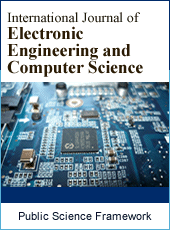International Journal of Electronic Engineering and Computer Science
Articles Information
International Journal of Electronic Engineering and Computer Science, Vol.1, No.2, Nov. 2016, Pub. Date: Sep. 8, 2016
The Modelling of the Synchronization Problem with Colored Petri Nets
Pages: 56-60 Views: 4517 Downloads: 1153
[01]
Goharik R. Petrosyan, International Scientific-Educational Center of the National Academy of Sciences, Yerevan, the Republic of Armenia.
The work is done to show the modeling of Patil synchronization problem with the support of Colored Petri Net, which was impossible to present with well known P and V operations or through Classical Petri Net [1], as the limitation of the mentioned mathematical properties does not allow to model the mechanisms, where the process must be synchronized with optimal allocation of resources. The work explains the modeling features of the synchronization function with Colored Petri Net. There is a detailed description of Patil proposal on synchronization issue of cigarette smokers with Colored Petri Net (Fig. 2.), which shows due to what exact properties of expansion occurred (guarding types to positions and tokens, guarding logical expressions to transitions and arcs, importing of high-level special properties, special for programming languages) and how to manage the process of resolving such problems through modern mechanisms of modeling. The described model below illustrates the most important qualities of the Colored Petri Net which allows to increase the potential for modeling with Colored Petri Net, and gives possibility of modelling for more detailed examination for such problems.
Synchronization Problem, Colored Petri Net, P and V Operations, Classical Petri Net, The Cigarette Smoker’s Problem, Token, Position, Transition, Arc, Guard
[01]
Peterson, James Lyle (1981). Petri Net Theory and the Modelling of Systems. Prentice Hall. ISBN 0-13-661983-5.
[02]
Tadao Murata. “Petri nets: Properties, Analysis and Applications.” Proc. of the IEEE, 77(4), 1989.
[03]
K. Jensen and G. Rozenberg, Eds., High-Level Petri Nets. Theory and Application, Springer-Verlag, Berlin, 1991, pp. 44-122.
[04]
K. Jensen. Coloured Petri Nets: Basic Concepts, Analysis Methods and Practical Use. Springer - Verlag, Berlin, 1992.
[05]
Jensen K. Coloured Petri Nets: Basic Concepts, Analysis Methods and Practical Use. Springer, 1996. Vol. 1–3.
[06]
Jensen K, “Coloured Petri Nets: Basic Concepts, Analysis Methods and Practical Use”, Basic Concepts. Monographs in Theoretical Computer Science, Springer – Verlag, Berlin, Germany, V.1, 2, 3, 1997.
[07]
J. D. Ullman, “Elements of ML Programming,” Prentice- Hall, Upper Saddle River, 1998.
[08]
Reising W., Rozenberg G. (eds). Lecture Notes on Petri Nets. Parts I and II // Lecture Notes in Computer Sciences. V. 1491 – 1492. Springer – Verlag, 1998.
[09]
K. Jensen and L. M. Kristensen. Coloured Petri Nets - Modeling and Validation of Concurrent Systems. Springer-Verlag Berlin, 2009.
[10]
Goharik R. Petrosyan, Andrey M. Avetisyan, Lilit A. Ter-Vardanyan Interrelation of Languages of Colored Petri Nets and Some Traditional Languages // Open Journal of Modelling and Simulation Vol.1 No. 3, Pub. Date: July 11, 2013.

ISSN Print: Pending
ISSN Online: Pending
Current Issue:
Vol. 6, Issue 3, September Submit a Manuscript Join Editorial Board Join Reviewer Team
ISSN Online: Pending
Current Issue:
Vol. 6, Issue 3, September Submit a Manuscript Join Editorial Board Join Reviewer Team
| About This Journal |
| All Issues |
| Open Access |
| Indexing |
| Payment Information |
| Author Guidelines |
| Review Process |
| Publication Ethics |
| Editorial Board |
| Peer Reviewers |


